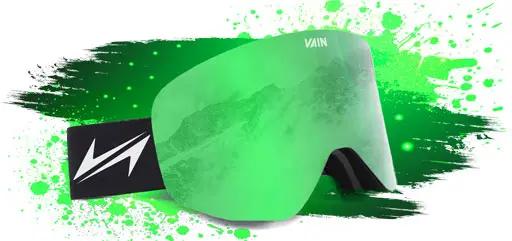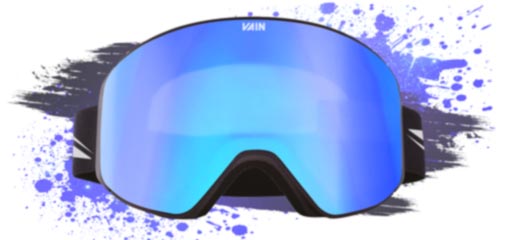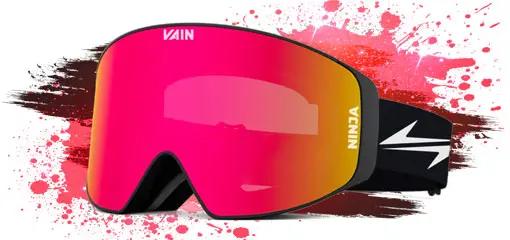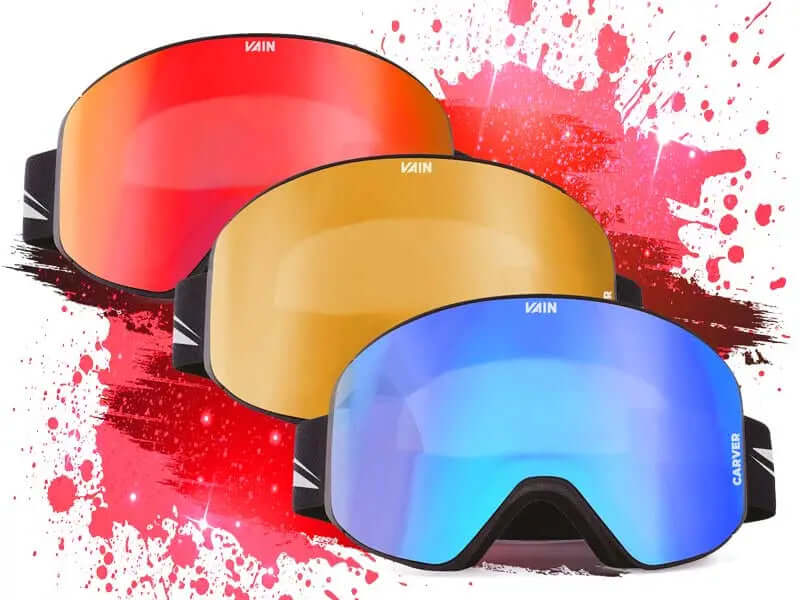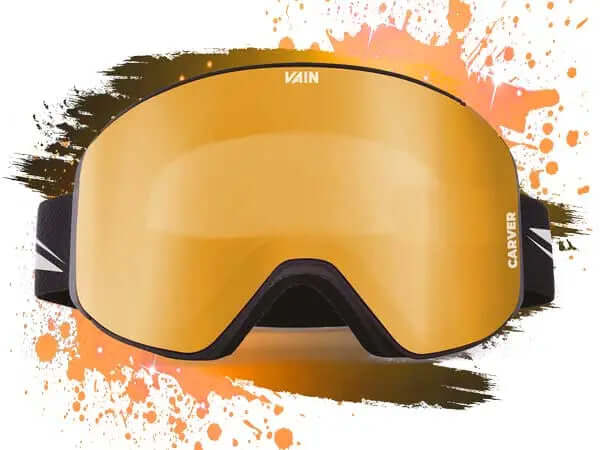Complete over the glasses (OTG) guide for ski goggles
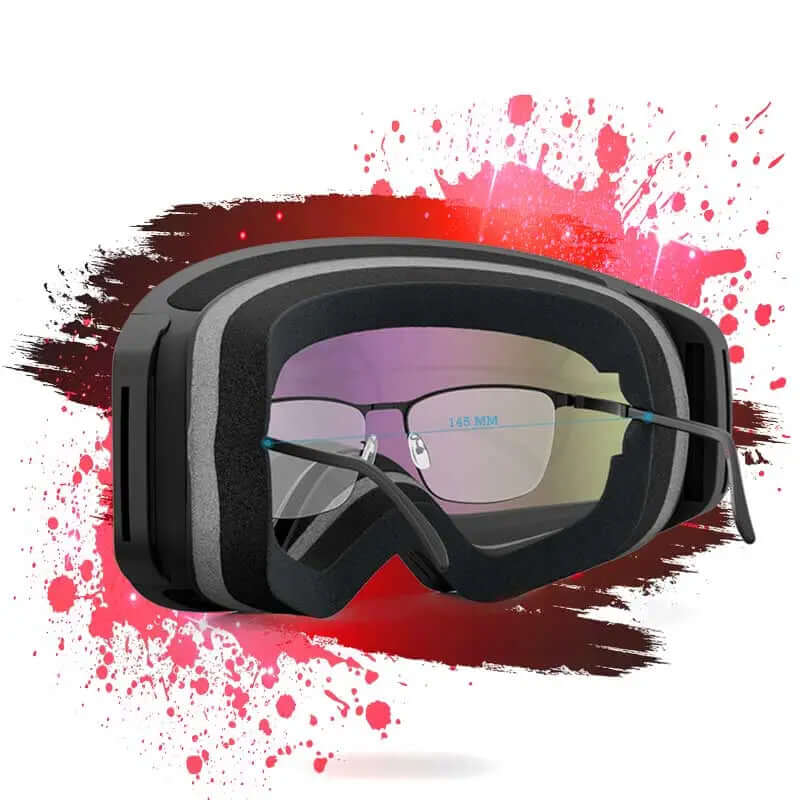
If you are wearing glasses and are not a fan of contact lenses, the options for winter sports are limited. There are three possible options: snowboard goggles with prescription inserts, a helmet visor, or normal goggle. We will describe each of the options and their advantages.
- What are OTG goggles?
- What is a visor helmet?
- What are prescription inserts?
- Ski goggle vs visor helmet
- Anti-fog for OTG goggles
What are OTG goggles?
OTG stands for over the glasses. So logically the OTG goggle is a goggle that fits over the glasses. So that you can wear both together. The benefit of OTG goggles is that you don't have to buy any additional optical equipment. It is also the cheapest option. On the downside it's the hardest option to find a good fitting pair for.
How to choose OTG goggles?
When you want to use a goggles over your glasses the right decision is complicated. First of all, we have to make clear what the size of your glasses are. If you have big glasses, it can be hard to find a proper fitted ski goggles. But when you have a small frame, this becomes a lot easier.

To make this a bit easier we give an indication of the goggle size per glasses frame width and size:
| Glasses width | Glasses size | Goggle size | Vizer Goggle |
| 130 mm | Medium | Medium | Slopester |
| 135 mm | Medium | Large | Carver & Ninja |
| 140 mm | Medium | Oversized | - |
| 145 mm | Medium | Visor Helmet | - |
What is a visor helmet?
A Visor helmet is a helmet with a visor that can be pulled down to protect your eyes and face. It is especially valuable for glasses wearers as they are fairly big. Underneath the visor is alot of space for glasses.

An alternative option to ski goggles is using a ski helmet with visor. The visors are bigger so that it won’t get in the way for your glasses. It can be hard to find a OTG goggle, going for the visor option might safe a lot of time.
What are prescription inserts?
Prescription ski goggles are typically compatible with prescription inserts. These inserts fit into the goggle frame. And allow glasses wearers to have great optics without wearing their own glasses under the goggles. If you are interested in using prescription ski goggles. We recommend that you seek out a company that can support both the goggle and the insert for you.

Benefits of prescription goggles + prescription inserts
The main benefit of the prescription inserts is that they have great optics. You don't have to wear contact lenses with maintaining the best vision. The anti-fog system is working better with inserts than with glasses. The prescription inserts are by far the best option available. As they combine the best performance with an easy fit. Downside is that they are a fairly expensive option.
Ski goggles vs Visor helmet
There are a few types of ski and snowboard goggles, each with its own advantages and disadvantages. One type is the visor. Visors have several advantages. They are lightweight and have a large field of view. They also less likely to fog up. The disadvantage is that they are not as durable as other types of winter goggles.

The other option is a helmet and goggle combination which is more flexible and often cheaper. It is also the best option for high performance use. We will sum the differences and pros & cons below, to ultimately decide which is the better option!
Pro’s & Cons for Visor helmets
| Pros | Cons |
| + All-in-one package | - High prices |
| + The best head protection | - Limited choice |
| + Stylish | - Cold wind gusting through |
| + Easy care | - Bulky look |
| + Easy visor slide up | - Not made for performance |
| + Convenient over the glasses (OTG) |
Conclusion: When to go for a visor
If you head for a fun skiing trip and are more concerned about your fashion than the actual snow sports, the visor is an excellent choice. It is easy to care for and practical to wear. However, it lacks performance for those who really want to hit the slopes hard.
Pros & cons for ski goggle and helmet combination
| Pros | Cons |
| + Unlimited combinations | - Seperate storage and handling |
| + Better fit to your needs | - Helmet and goggle have to fit together |
| + Relatively cheaper | |
| + Great protection | |
| + Way more features available | |
| + Ability to use seperately |
Conclusion: When to go for a ski goggle and helmet combination
If you desire to hit the slopes hard and have the best of the best, then yes, the goggle and helmet combination will provide the best features. Beyond that, it is often much less expensive than a visor helmet. If you often do not use your helmet, then the goggles are obviously the wise selection.

Ski goggles or Visor: Which one to choose?
Now, all that remains is to choose one. Since you do not compromise on any of the two, it is important to learn about each of them before making a choice. The simple answer is that it all depends on your preferences and likings. If you want comfort, as well as a hassle-free experience while skiing and you do not compromise on the protection, go with a visor helmet.
Although both will work well without creating difficulties, if you like to ski sometimes without wearing your helmet, or you have a lower budget, you can go with a helmet and snow goggles. Both of them work great without creating difficulties. However, due to the latest innovation, visor helmets are really easy to handle and use.
Anti-fog for OTG goggles
Now that the available options are known, we can dive into the anti-fog treatments. Anti-fog treatments are even more important when wearing goggles over the glasses. There is more lens surface to fog up and normally less ventilation. We'll tell you what to do to prevent fogging up of your goggle.

What is the fogging up of my lens?
The first thing you can do to prevent fogging is to understand why it happens. Learn to spot behaviors that could cause it, even when they aren't listed here or anywhere else.
Fogging occurs when the warm and moist air inside your goggle interacts with the cold surface of your lens. This humid air condenses into drops of water that cling to your lens.
How to prevent fogging up of your snow goggle?
To mitigate fogging, you should aim to:
- Minimize the amount of moisture within the goggles.
- Maintain the temperature on the interior of the goggles as close to the outside temperature as possible.
Antifog additives that goggles are now treated with can only absorb a certain amount of moisture. The rest is up to you.

What does anti-fog do?
The anti-fog coating is a layer on the inside lens of your ski goggle that will prevent water droplets from forming on your lens. Those droplets will look like what we call fogging up of the lens. Instead the water on the lens becomes a film of water on the lens, which will appear less visible than the droplets.
0 comments

